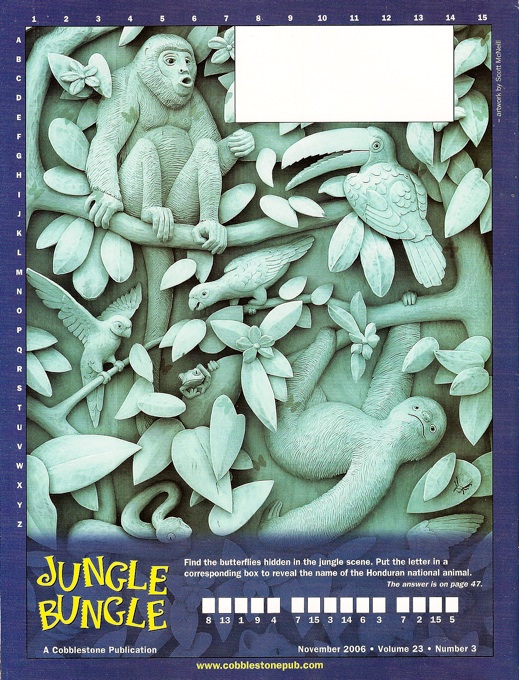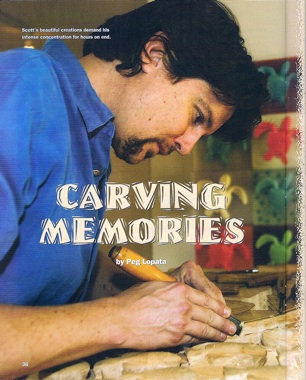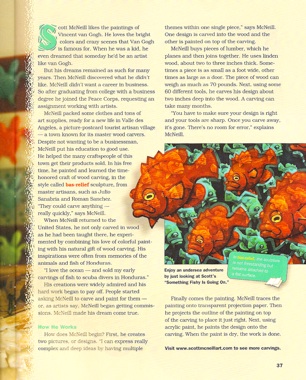Scott McNeill Art, Woodcarving Memories, Faces Magazine, 2006
“Carving Memories”
Faces Magazine
November 2006
by Peg Lapota

Scott McNeill likes the paintings of Vincent van Gogh. He loves the bright colors and crazy scenes that Van gogh is famous for. When he was a kid, he even dreamed that someday he'd be an artist like Van Gogh.
But his dreams remained as such for many years. Then McNeill discovered what he didn't like. McNeill didn't want a career in business. So after graduating from college with a business degree he joined the Peace Corps, requesting an assignment working with artists.
McNeill packed some clothes and tons of art supplies, ready for a new life in Valle de Angeles, a picture-postcard tourist artisan village-- a town known for its master wood carvers. Despite not wanting to be a businessman, McNeill put his education to good use. He helped the many crafts people of this town get their products sold. In his free time, he painted and learned the time honored craft of wood carving, in the style called bas-relief sculpture, from master artisans, such as Julio Sanabria and Roman Sanchez. "They could carve anything -- really quickly," says McNeill.
When McNeill returned to the United States, he not only carved in wood as he had been taught there, he experimented by combining his love of colorful painting with his natural gift of wood carving. His inspirations were often from memories of the animals and fish of Honduras.
"I love the ocean -- and sold my early carvings of fish to scuba divers in Honduras."
His creations were widely admired and his hard work began to pay off. People started asking McNeill to carve and paint for them - or, as artists say, McNeill began getting commissions. McNeill made his dream come true.
How He Works
How does McNeill begin? First, he creates two pictures or designs. "I can express really complex and 'deep' ideas by having multiple themes within one single piece," says McNeill. One design is carved into the wood and the other is painted on top of the carving.
McNeill buys pieces of lumber, which he planes and joins together. He uses linden wood, about two to three inches thick. Sometimes a piece is as small as a foot wide, other times as large as a door. The piece of wood can weigh as much as 70 pounds. Next, using some 60 different tools, he carves his design about two inches deep into the wood. A carving can take many months.
"You have to make sure your design is right and your tools are sharp. Once you carve it away, it's gone. There is not much room for error," explains McNeill.
Finally comes the painting. McNeill traces the painting onto transparent projection paper. Then he projects the outline of the painting on top of the carving to place it just right. Next, using acrylic paint, he paints the design onto the wood carving. When the paint is dry, the work is done.


(back cover)








